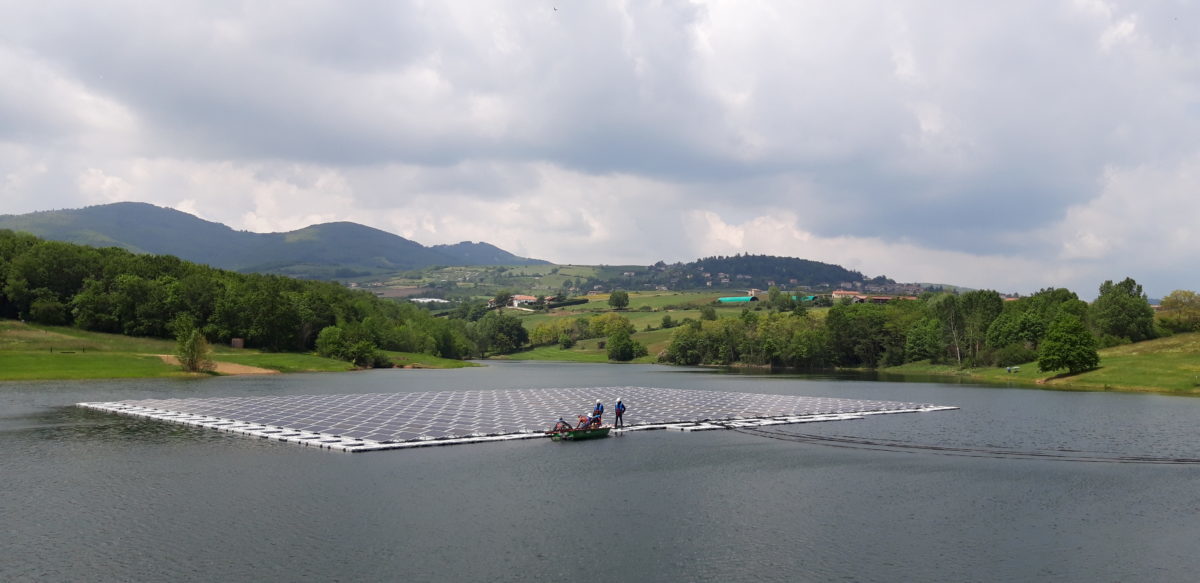From pv magazine France.
In June, the Compagnie Nationale du Rhône (CNR) unit of French energy giant Engie inaugurated its first floating solar power plant, on Lac de la Madone, in the southern French Rhône department.
That 230 kW pilot project was the prelude to a newly announced 30 MW floating array the company is planning in the municipality of Châteauneuf-du-Rhône, in the Drôme department.
“The technology is proven, we learned a lot with the Madone project,” said Nicolas Dalisson, head of photovoltaic projects at CNR. During the first months of operation of the Madone plant, no problems appeared, he told pv magazine, adding: “This gives us confidence in the success of the Châteauneuf-du-Rhône project.”
The new project proposal is under review by the authorities with the town of Châteauneuf-du-Rhône issuing a favorable opinion and CNR is now awaiting a building permit. “We hope to be able to start the construction during 2021,” said Dalisson.
Environmental impact
Popular content
The proposed Châteauneuf-du-Rhône plant would be installed on two bodies of water at a former gravel pit operated by concrete and construction company Lafarge. The nature of the location ensures the project would have little impact on the landscape or biodiversity, according to Dalisson.
“We are also carrying out studies on the environmental integration of such projects on water bodies,” added the project manager. “This is a very important aspect for us.” The CNR representative said environmental impact studies could give rise to innovations such as fish spawning grounds installed under the floating platforms. “We intend to put the same devices in Châteauneuf-du-Rhône,” he said, adding the distance planned between the platforms and to the banks would take into account fish. “We have reached a ratio of just over 50% of the water surface. This is a strong measure taken as part of the sizing of the plant,” he added.
CNR – whose utility parent company also generates power from petrol, nuclear and natural gas – said it is studying changes in the physical-chemical nature of water which hosts its floating PV plants as well as the adaptation of species to such installations.
Dalisson said the environmental authority has looked favourably on the Châteauneuf-du-Rhône proposal, adding: “All the lights are green.”
This content is protected by copyright and may not be reused. If you want to cooperate with us and would like to reuse some of our content, please contact: editors@pv-magazine.com.



By submitting this form you agree to pv magazine using your data for the purposes of publishing your comment.
Your personal data will only be disclosed or otherwise transmitted to third parties for the purposes of spam filtering or if this is necessary for technical maintenance of the website. Any other transfer to third parties will not take place unless this is justified on the basis of applicable data protection regulations or if pv magazine is legally obliged to do so.
You may revoke this consent at any time with effect for the future, in which case your personal data will be deleted immediately. Otherwise, your data will be deleted if pv magazine has processed your request or the purpose of data storage is fulfilled.
Further information on data privacy can be found in our Data Protection Policy.